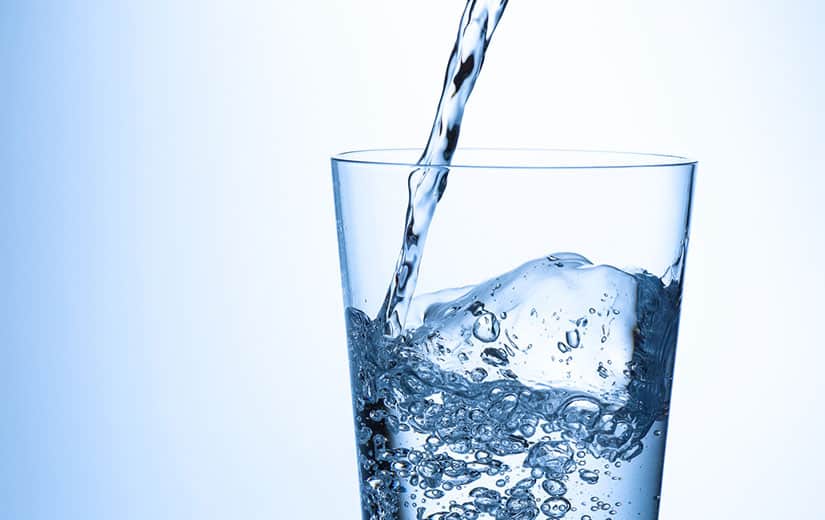Disabling and painful on a daily basis, osteoarthritis generally affects the knee. We tell you everything about this inflammation which concerns many people in France. How does knee osteoarthritis manifest? And what natural remedies are there to soothe the pain associated with inflammation? Follow our advice and treatments to relieve knee osteoarthritis.
Summary
What is osteoarthritis?
Osteoarthritis is one of the most frequently observed forms of arthritis, which is a joint disease of inflammatory origin.
This degenerative pathology of the joints is manifested by a progressive decline in their proper functioning. It is accompanied by symptoms that are both painful and disabling on a daily basis. Among the associated ailments, there is pain and stiffness in the joints making movement difficult.
10 million people in France suffer from osteoarthritis, and suffer its negative repercussions in everyday life. Often related to age, this evil can also occur after intensive practice of a sport, regular carrying of heavy loads, obesity or following joint abnormalities. Not to mention the genetic background.
On the other hand, there is currently no treatment to fight against this progressive disease. However, natural remedies can soothe the pain of inflammation, and provide a satisfactory response to patients who suffer from it.
How does it manifest in the knee?
Osteoarthritis of the knee, also called gonarthrosis, is characterized by deterioration of the cartilage of the knee joint. It can affect only one knee or both, which is often the case. This disease is disabling when it affects this part of the body. Indeed, the knee, like the hip, supports the weight of the body.
Osteoarthritis affects the femoro-patellar joint (between the femur and the patella) and/or the femoro-tibial joint (between the femur and the tibia).
This evil evolves by crises or inflammatory flare-ups following one another at irregular intervals, according to the patient.
Natural treatments for osteoarthritis of the knee
The sport
Practicing a sporting activity is the first natural treatment for knee osteoarthritis. Favor sports that strengthen the thigh muscles such as cycling, walking (only on flat ground), golf, swimming, sliding sports, gentle gymnastics.
Conversely, track sports such as tennis, athletics or running are to be avoided.
The physio sessions
Physiotherapy reduces stiffness and also muscles the thigh, which aims to stabilize the joint.
You can also reproduce certain simple gestures at home (weight training, stretching, etc.).
Spa treatments
Doing thermal cures is recommended in case of osteoarthritis of the knee. Indeed, they allow the acquisition of good habits to take care of his knees.
And spa treatments also combine balneotherapy, physiotherapy, physical activity… Movement, apart from inflammatory flare-ups, is beneficial for the joints.
orthopedic insoles
Sometimes doctors prescribe orthopedic insoles to correct overpressure in a knee. This helps relieve inflammation-related pain.
But, in general, sole or not, it is advisable to wear soft shoes and absolutely avoid wearing high heels.
Wear a knee pad
To facilitate walking, it is advisable to wear a knee pad. This will avoid feelings of flight or loss of balance. Feeling your knee well supported also reassures people with osteoarthritis.
Use a cane
During seizures, the person can lean on a cane. You just have to hold it on the side opposite the knee with osteoarthritis. There are height-adjustable models.
The harpagophytum or devil’s claw
This common root in Africa is used in traditional medicine. Also called devil’s claw, harpagophytum relieves inflammation including osteoarthritis of the knee.
Use this root with anti-inflammatory properties respecting the dosage of 400 mg per day (in the form of a capsule or powder).
Ginger
This root with multiple soothing properties is also used to relieve pain related to osteoarthritis.
Consume ginger in the form of herbal tea by infusing 200 grams of the root in a large glass of water. Then add a teaspoon of honey to make the taste more pleasant.
Devil’s claw
Devil’s claw, also called harpagophytum, has enjoyed growing success in recent years. It is presented as the new remedy and the flagship of phytotherapy.
This medicinal plant has been known and used for several centuries. Its therapeutic potential was first discovered by the populations of southern Africa, before interesting the international scientific community. Through numerous studies, researchers have identified powerful active ingredients and confirmed the therapeutic properties of harpagophytum.
A little history
The harpagophytum is a perennial plant that is easily recognized by its purple flowers, its fruits and its voluminous roots. It was discovered by natives in the Kalahari Desert, located between Botswana and Namibia. The healers of these tribes were the first to perceive the therapeutic potential of Harpagophytum procumbens or devil’s claw.
They began to use these roots to treat various diseases. In particular, they noticed benefits for relieving joint pain, muscle pain, and digestive upset. They also used Devil’s Claw to treat urinary tract infections, ulcers and blood diseases.
What does science say?
Many studies were then carried out to understand the therapeutic potential of the harpagophytum and to identify the key ingredients. Three main components have been identified: procumbide, harpagide and harpagoside.
Today, these molecules are known to have natural anti-inflammatory activity. Some studies show that they also have antioxidant, uterotonic, anticonvulsant, analgesic, antidiabetic, anticancer, and cardioprotective potential.
Nowadays, the harpagophytum is mainly recommended to relieve joint pain, body aches and digestive disorders. It is for this reason that devil’s claw is strongly recommended for people suffering from osteoarthritis of the knee. It is important to clarify that it may take a few months to reach maximum effectiveness. It will be necessary to know how to be patient because the results are really up to expectations.
white willow
Also called white wicker, this natural painkiller is an excellent anti-inflammatory to overcome osteoarthritis pain.
Simply crush a few white willow leaves or boil the bark. And to facilitate its absorption into the blood, combine white willow with pepper.
Bromelain
This enzyme contained in pineapple (stem, pulp, juice, skin) soothes pain associated with osteoarthritis of the knee.
It can also be consumed through pineapple, without any moderation, or in the form of food supplements (500 mg three times a day).
Namely: for bromelain to play its anti-inflammatory role, it should not be heated above 40°C.
acupuncture
This technique would have effects comparable to those of morphine-based treatments. Indeed, acupuncture acts on all parts of the inflammation.
The sessions are to be practiced during or outside of crises, and can complement drug treatment.
The number of sessions (generally 45 minutes) varies according to the patient and the degree of pain experienced.
Watch your diet
Some substances are to be avoided while others are beneficial in the fight against osteoarthritis of the knee.
Among the foods to avoid are those rich in gluten and lactose. Also forget sunflower or grapeseed oils that are too rich in omega 6. Conversely, prefer olive oil, organic rapeseed oil in first cold pressing.
As for fruits and vegetables, eat nuts, almonds, flax seeds, lamb’s lettuce, spinach, red fruits, pineapple, prunes, figs, kiwis, tomatoes every day…
And cut out saturated fats, found in butter, dairy, cheese, and meat, if possible.
Wintergreen essential oil
This essential oil is suitable for pain related to osteoarthritis of the knee because it is a powerful anti-inflammatory.
Please note that wintergreen essential oil is not recommended for pregnant women.
More natural treatments:
- 7 natural treatments for warts
- 7 Natural Acne Treatments
- 7 Natural Psoriasis Treatments
- 7 Natural Lice Treatments
- 3 natural treatments for scabies
- 11 Natural Constipation Treatments
- 9 natural treatments for angina
- 13 Natural Asthma Treatments
- 7 natural treatments for anemia
- 8 natural treatments for anxiety
- 9 treatments for heartburn
- 11 natural treatments for canker sores
- natural treatments for paronychia
- 7 natural treatments for cystitis
- 11 Natural Gout Treatments



